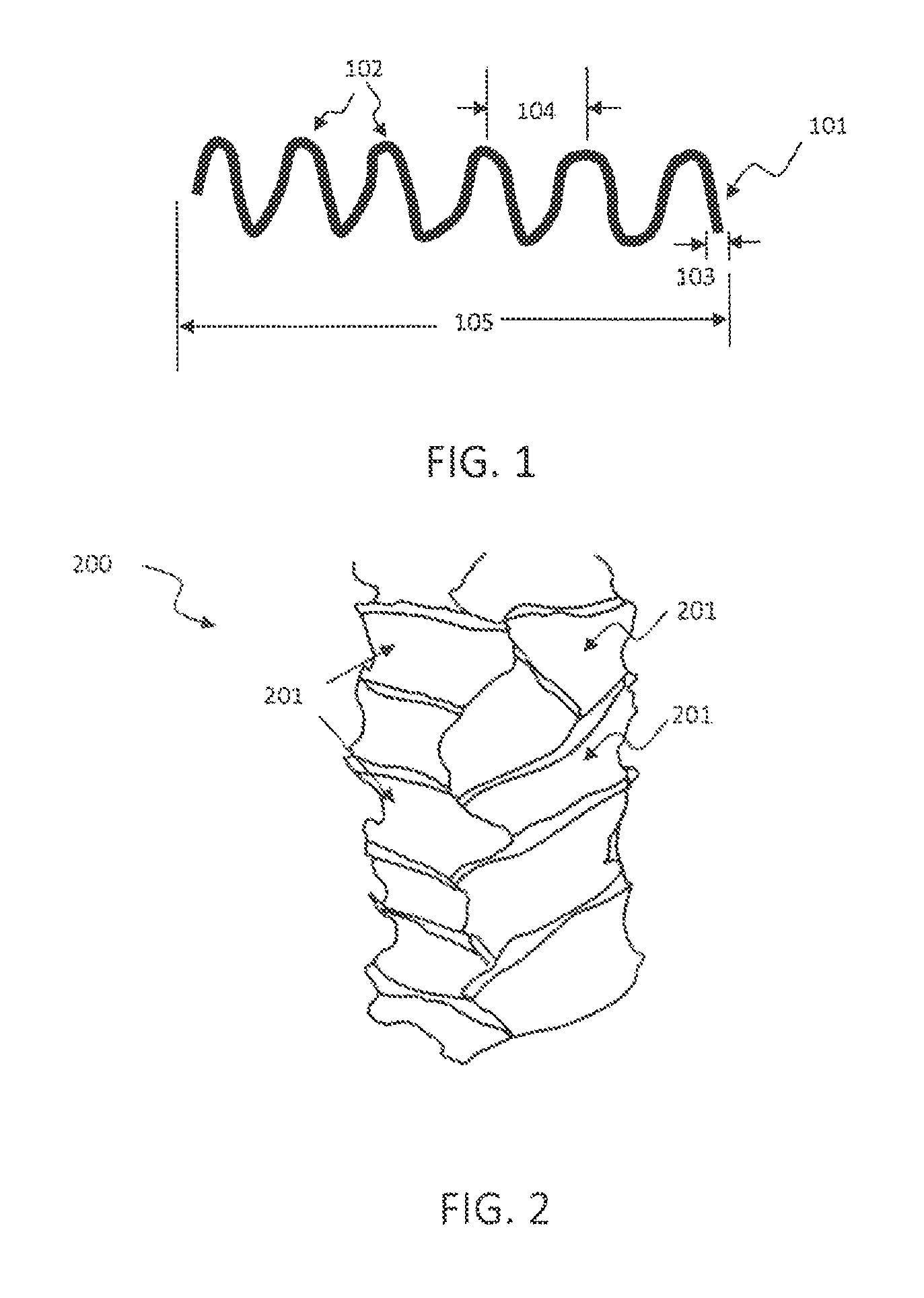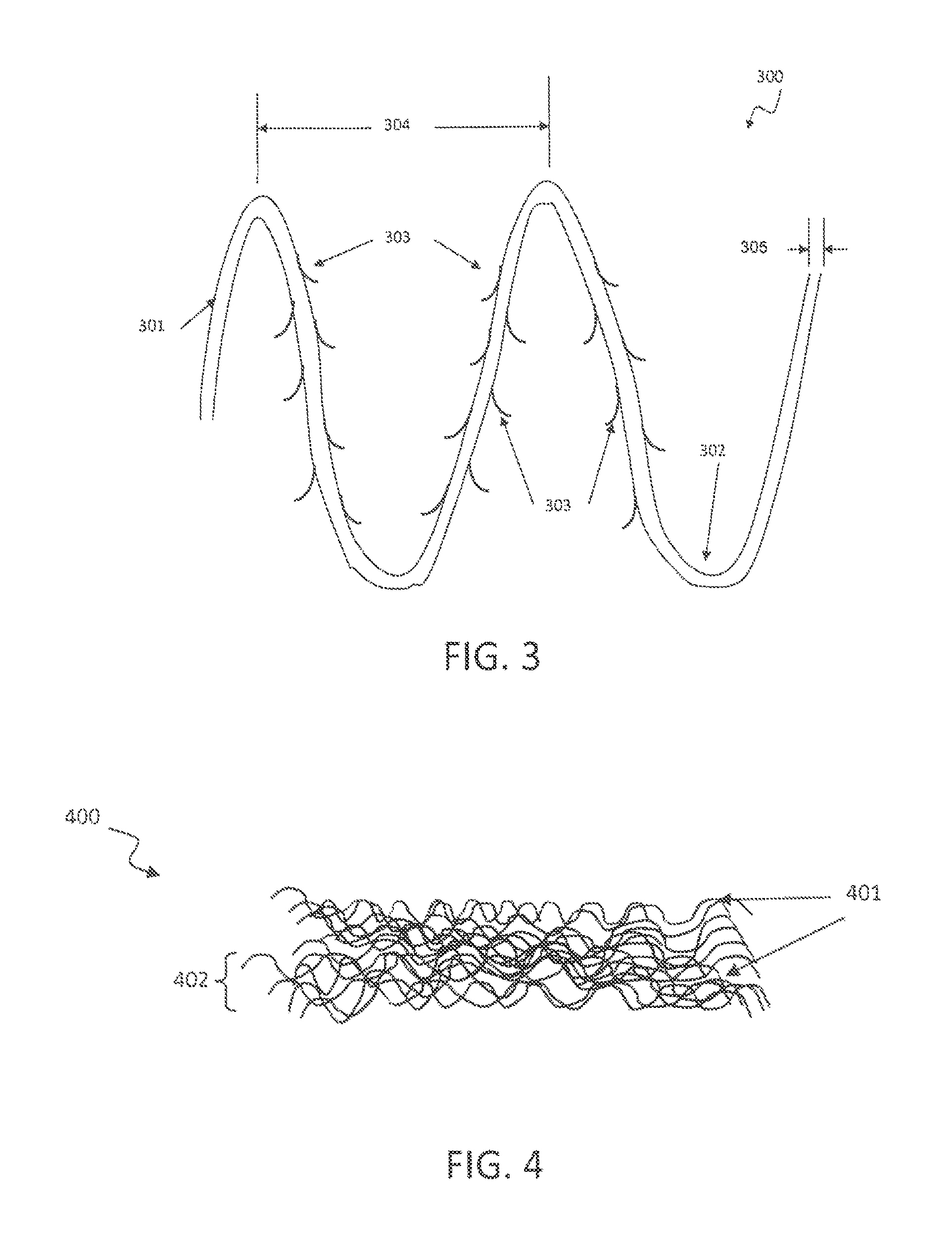Soft batt insulation material and method for making
a technology of soft batt and insulation material, which is applied in the directions of heat proofing, weaving, transportation and packaging, etc., can solve the problems of itchiness to the touch, and achieve the effects of less energy to manufacture, convenient installation, storage and transportation, and more environmentally sa
- Summary
- Abstract
- Description
- Claims
- Application Information
AI Technical Summary
Benefits of technology
Problems solved by technology
Method used
Image
Examples
Embodiment Construction
A. Fibers Used to Make the Soft Batts
[0031]The shape, surface characteristics, and method of processing the fibers provides the characteristics of an insulation material that holds form without the addition of glues or binding agents to hold the fibers together and an insulation material that is resiliently compressible.
[0032]FIG. 1 is a side view of an exemplar fiber 101 used to produce a batt of insulation material. The fiber can be from a natural source or synthesized from inorganic material. Exemplar of natural fibers includes but is not limited to protein-based fibers such as wool or cellulous-based fibers such as cotton. Exemplar of synthetic fibers includes but is not limited to fibers formed from plastics, polyesters, or other chemical petroleum based fibers, or fiberglass.
[0033]The average fiber diameter 103 used to produce an insulation batt is between twenty and forty microns. Preferably, the fiber length 105 resting is from one half inch to six inches for natural fibers ...
PUM
| Property | Measurement | Unit |
|---|---|---|
| density | aaaaa | aaaaa |
| length | aaaaa | aaaaa |
| length | aaaaa | aaaaa |
Abstract
Description
Claims
Application Information
 Login to View More
Login to View More - R&D
- Intellectual Property
- Life Sciences
- Materials
- Tech Scout
- Unparalleled Data Quality
- Higher Quality Content
- 60% Fewer Hallucinations
Browse by: Latest US Patents, China's latest patents, Technical Efficacy Thesaurus, Application Domain, Technology Topic, Popular Technical Reports.
© 2025 PatSnap. All rights reserved.Legal|Privacy policy|Modern Slavery Act Transparency Statement|Sitemap|About US| Contact US: help@patsnap.com



